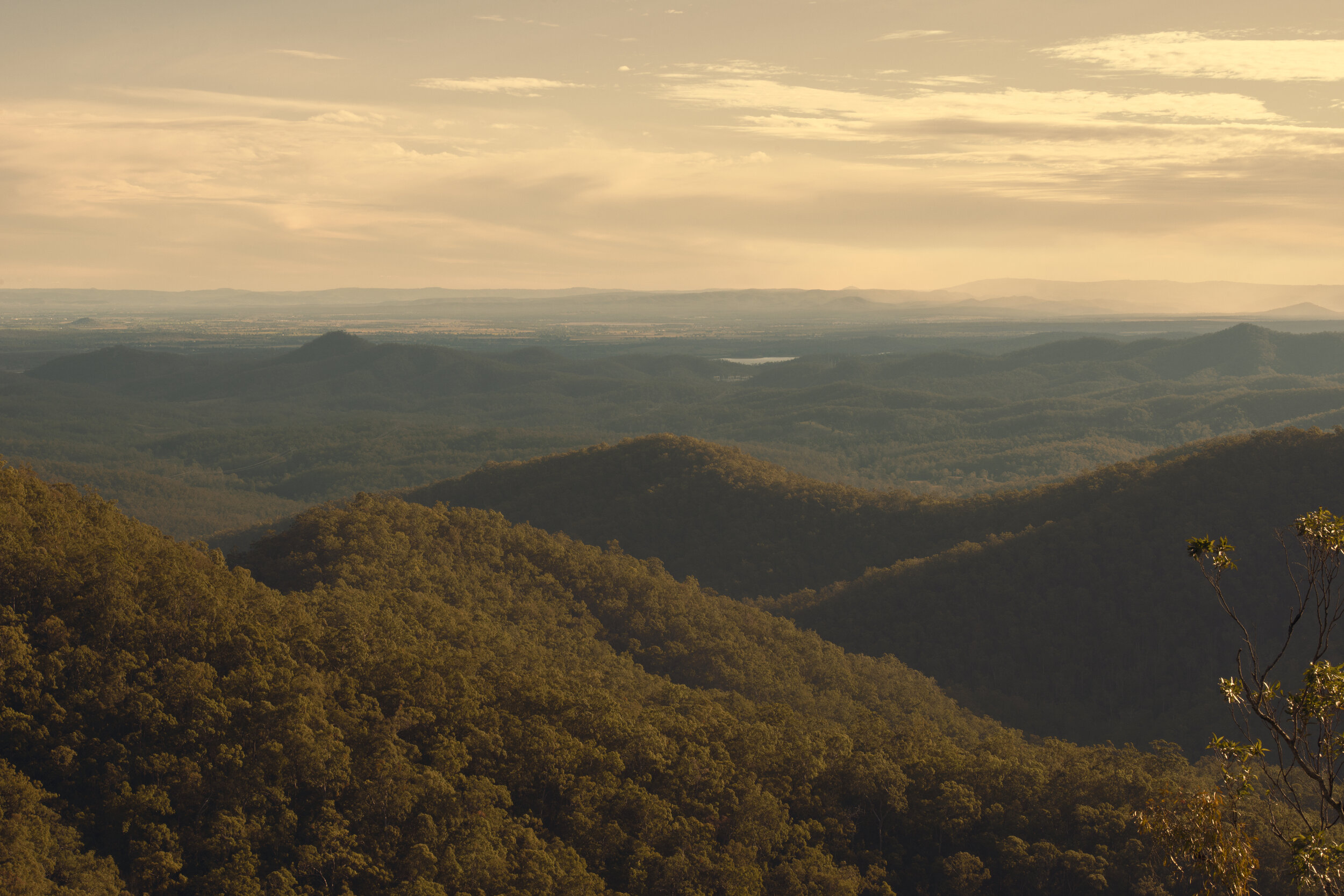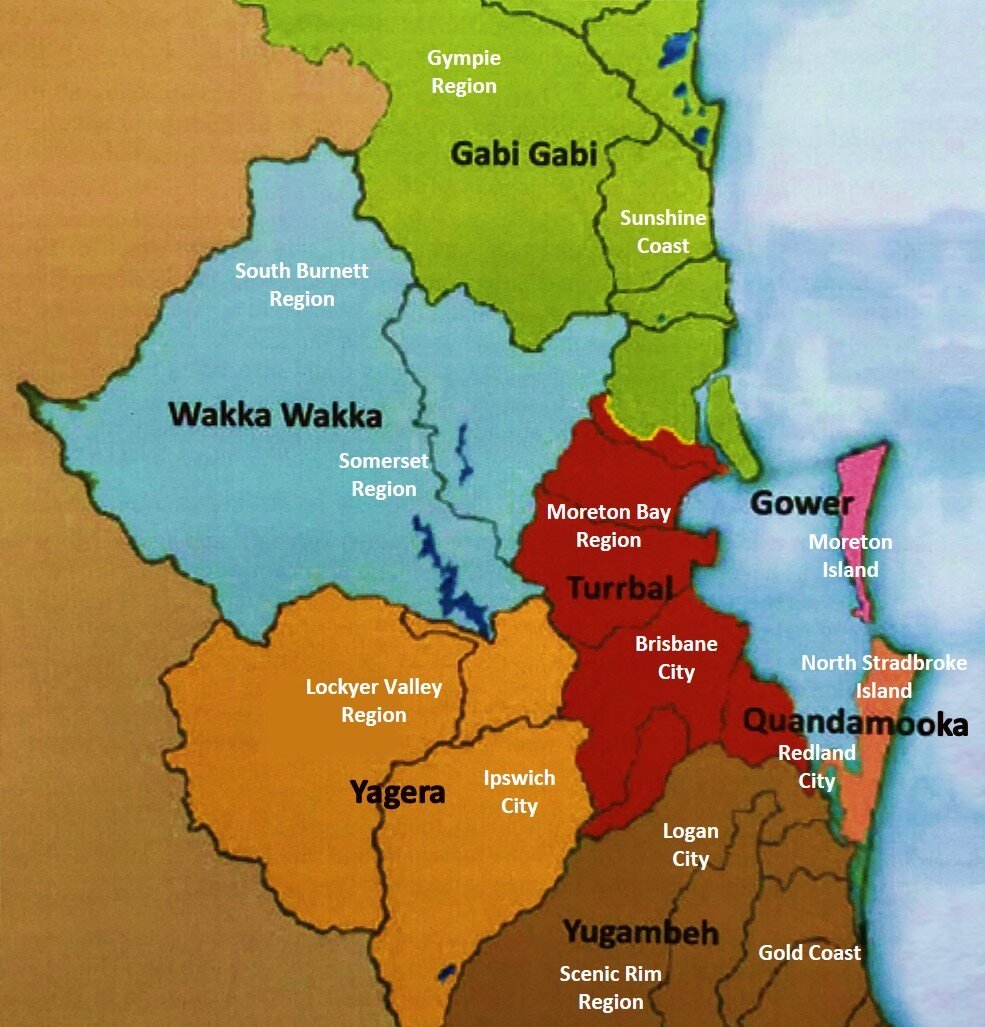Our Story

The Turrbal people have been the custodians of the Brisbane area for many thousands of years
Our People
The traditional name of Brisbane is Meeanjin - the place of the blue water lilies. It is the story of near-extinction of the Turrbal Tribe, the original inhabitants of Brisbane, that has enticed some neighbouring tribal groups (such as Jagera/Yaggera) to attempt to falsely claim Brisbane as their ancestral homelands.
The Turrbal people are not all dead and gone - we are alive and well, and our compelling story goes back to the heroic and inspiring survival of Maroochy Barambah’s great, great grandmother named Kulkarawa.
Among our ancestors:
King of Toorbal - the King of the Turrbal Tribe from the 1820s to the 1850s
Duke of York (Daki-Yakka) - the successor to the King of Toorbal
Kulkarawa - the daughter of Duke of York, who fled the Brisbane massacres by escaping to the Sunshine Coast (our tribe has survivors today because of Kulkarawa’s actions)
King Sandy (Kerwallie) - a Ningy Ningy man (no surviving descendants)
Billy Isaacs - a champion athlete who was a descendant of Kulkarawa
Source: 'Map 3.19: Language-territories of South-East Queensland', p. 138, Turrbal Anthropological Assessment, Gaynor MacDonald
Today, there are under 50 surviving members of the Turrbal Tribe (we were previously a tribe of 3,000+ before the widespread massacres). It must be noted that in historical times, Aboriginal people of Queensland were categorised into two groups:
1) Exempted - to fall in this category one had to give up their Aboriginality and their association with the Aboriginal community under Queensland state law
2) Non-Exempted - those falling in this category were put on Aboriginal reserves where they were encouraged, to a certain extent, to preserve their culture
We, the modern day Turrbals are reserve Aboriginals and never signed away our Aboriginality.
Post-British Contact
1799 - Arrival of Flinders into Moreton Bay.
1823 - Three British castaways get lost off the coast of Sydney, one of which ends up living with the Ningy Ningy clan on the Redcliffe Peninsula (Ningy Ningy is one of the clans making up the Turrbal Tribe).
1824 - John Oxley arrives in the Moreton Bay district. It was the castaway living with the Ningy Ningy clan who showed Oxley the Brisbane River.
1824 - The first convict settlement in Queensland is established in what is today called Redcliffe.
1825 - The convict settlement is relocated south from Redcliffe due to mosquitos, bad moorings, and the Aboriginals (the Ningy Ningy clan had a reputation of being kind but also wild).
Post-1825 - The settlement of the British in Meeanjin (Brisbane) leads to interracial tensions between the Turrbal Tribe, who are known as the “old Brisbane tribe”, and the British. These tensions ultimately result in the genocide of the Turrbal people, leaving few survivors.
1860s - Historical records state that the Turrbal Tribe is on the verge of extinction.
1860s - The British drive out the survivors of the Turrbal Tribe who are then forced to seek refuge on the fringes of Brisbane.
1890s - Laws are passed in Queensland that serve the purpose of protecting the Aboriginal population from further extinction. Consequently, all Aboriginals are rounded up and placed on reserves. The Turrbal people end up on Barambah Aboriginal Reserve (later renamed to Cherbourg) and Taroom.
Since the 1890s - We have been keeping our cultural identity alive within our ancestral homelands.


